Pricing Guides & Dictionary of Makers Marks for Antiques & Collectibles

GERMAN PORCELAIN & BISQUE DOLLS:
Identification and Appraisal Guides
Join the most updated and complete collectibles research online - Learn more...
 GERMAN DOLLS, along with antique French Dolls, are regarded by collectors as the most desirable. German porcelain dolls, in particular, are known for their high quality and durability. They also usually fetch high prices at antiques auctions and most are clearly marked with makers' marks for identifying and determining their age. For help on that, please see our Antiques Price Guides and Porcelain & Pottery Marks Guides.
GERMAN DOLLS, along with antique French Dolls, are regarded by collectors as the most desirable. German porcelain dolls, in particular, are known for their high quality and durability. They also usually fetch high prices at antiques auctions and most are clearly marked with makers' marks for identifying and determining their age. For help on that, please see our Antiques Price Guides and Porcelain & Pottery Marks Guides.
Most early German Dolls were made in Bisque, i.e. fired only once and had no glaze. The vast majority of these were manufactured ca mid-to-late 19thC, from 1840 to 1880s. After that time, and although Bisque Dolls were still being produced at an appreciable level, most porcelain dolls were glazed and had a smoother surface. These dolls are specifically referred to as China Dolls by serious collectors, but this term is sometimes used generically for all Porcelain Dolls in general. The peak of production for porcelain dolls in Germany occurred in the period between the 1890s to 1930s.
Originally, the majority of Bisque Dolls made prior to 1840s were likenesses of adults, not necessarily meant to be used as toys and were rather large in size. This gradually changed and now most antique German Porcelain Dolls that have survived since the mid-19thC are child-like or babies and very rarely measure more than 17 inches in height. However, the general style of German dolls remained basically the same. Notable exceptions are some facial features, such as the lips contours, shape or puffiness of cheeks, open or closed mouth, the appearance of frontal teeth etc.
However, the most significant changes occurred in the materials of which they were made. For example, glass eyes replaced painted eyes on dolls heads and the bisque (and later glazed porcelain or china) parts were enhanced and became more durable for everyday playful use. Industrial methods and consistent quality control also improved significantly, which aided in further market penetration due to lower and more affordable pricing.
Additionally, some companies began to specialize in making only specific parts of these dolls, such as producing Porcelain Doll Heads only, while the body was subcontracted to others. Several mergers also strengthened these alliances, as for example the union of Armand Marseille with Ernst Heubach, which although did not last long, provided for an influx of high-quality porcelain dolls ca early to mid 20thC, most of which still survive to this day as grandma's dolls or for some of the oldest amongst us, our very own strong reminders of a precious childhood.
The vast popularity of Porcelain Dolls worldwide also prompted interesting rivalries and competition. A characteristic instance of this rivalry was the introduction of Fashion Dolls in France, which were meant to be in direct contrast to the now mostly mass-produced German dolls. These Fashion Dolls are particularly pretty, partly because in addition to their usually more feminine or baby-like facial features, their bodies were also made in fairly accurate human proportions and were adorned with the cutest and most detailed dresses & dolls clothing. Most often, this clothing was interchangeable, which sparked an even larger market for Dolls Clothing & Accessories or little-tiny Doll Uniforms, snapped by any child whose family could afford them. Jumeau Dolls are amongst the most famous makers of Fashion Dolls in France and according to some historians, it is said that their Paris factory was set up as a deliberate attempt to compete with German Porcelain Dolls, especially those manufactured in the ever-increasing German industrial complex in the region of Saxony.
Needless to say, as porcelain dolls became more and more affordable and demand surged to new heights with the emergence of the Middle Class in the US & Europe after WWII, new entrants in doll manufacturing, especially from Japan, eventually replaced most German (or French) makers in the market, many of whom soon closed. Because of this shift in the supply of dolls, along with the introduction of dolls made of totally different materials (plastic, celluloid, etc), antique German Porcelain Dolls nowadays remain high in the minds of avid doll collectors and are almost always the most sought after at auction or antique fairs.
Unlock the true value of your collection with our comprehensive research guides from identifying makers' marks to appraising all kinds of antiques and collectibles, including items featured in this article.
Our up-to-date information will give you an accurate understanding of your items' worth. Don't miss out on this valuable resource - visit our research tools today!
In addition to some examples shown below on this page, you can also search our price guide for your own treasures.
Examples of related items from our Price Guides
-
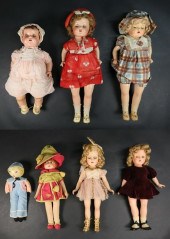 7 DOLLS INCLUDING EFFANBEE, MADAME ALEXA
[more like this]
7 DOLLS INCLUDING EFFANBEE, MADAME ALEXA
[more like this]
-
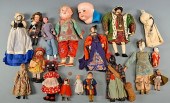 ASSORTED DOLLS, 18 ITEMS INC QING CHINES
[more like this]
ASSORTED DOLLS, 18 ITEMS INC QING CHINES
[more like this]
-
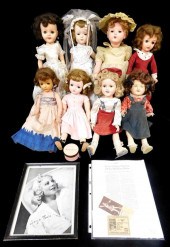 DOLLS: EIGHT DOLLS, INCLUDING: 18" WANDA
[more like this]
DOLLS: EIGHT DOLLS, INCLUDING: 18" WANDA
[more like this]
-
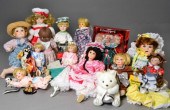 (16)Various Collector DollsIncluding Mom
[more like this]
(16)Various Collector DollsIncluding Mom
[more like this]
-
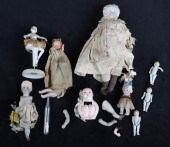 19th/20th C porcelain doll grouping to i
[more like this]
19th/20th C porcelain doll grouping to i
[more like this]
-
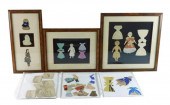 EARLY DRAWINGS INCLUDING PAPER DOLLS AND
[more like this]
EARLY DRAWINGS INCLUDING PAPER DOLLS AND
[more like this]
-
 EYES RIGHT LARGE SKOOKUM DOLL W/ BABY C.
[more like this]
EYES RIGHT LARGE SKOOKUM DOLL W/ BABY C.
[more like this]
-
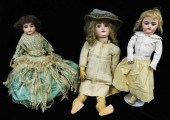 DOLLS: TWO BABY DOLLS AND ONE STANDING D
[more like this]
DOLLS: TWO BABY DOLLS AND ONE STANDING D
[more like this]
-
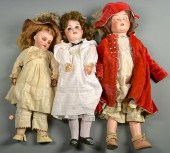 3 GERMAN DOLLS INC. KESTNER BRU TYPE1st
[more like this]
3 GERMAN DOLLS INC. KESTNER BRU TYPE1st
[more like this]
-
 COLLECTION OF (8) GERMAN BISQUE HEAD DOL
[more like this]
COLLECTION OF (8) GERMAN BISQUE HEAD DOL
[more like this]
-
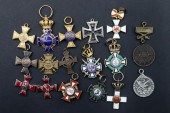 MILITARIA. IMPERIAL GERMAN AND AUSTRIAN
[more like this]
MILITARIA. IMPERIAL GERMAN AND AUSTRIAN
[more like this]
-
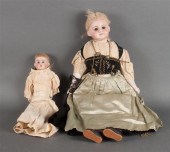 German bisque and cloth doll in ethnic c
[more like this]
German bisque and cloth doll in ethnic c
[more like this]
There are many more auction results available to our members...





